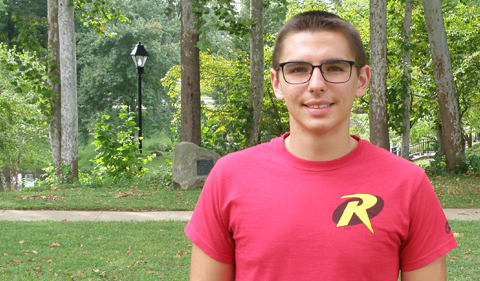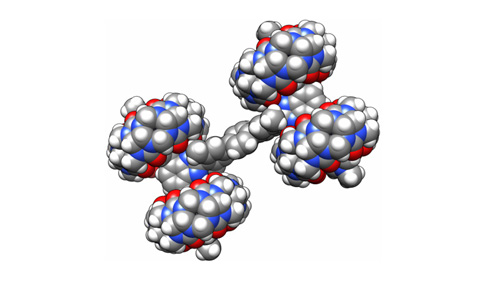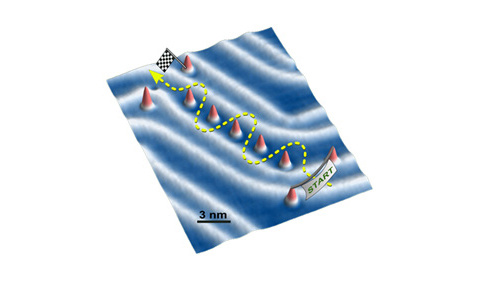
By Ryan Tumbleson ’20
HTC Engineering Physics and Electrical Engineering
It’s crazy to think that my summer and my internship at Argonne National Lab near Chicago are over. (I explain what I did there in previous posts, Exploring the Nanoscale and Interns Tour Chicago.) I’m very grateful to have the opportunity to work at Argonne with Dr. Saw-Wai Hla, a professor of Physics and member of the Nanoscale & Quantum Phenomena Institute at Ohio University. The summer internship has been an amazing experience, and there is more to come.
Back at OHIO, I continue to work under Dr. Hla’s supervision. One of my responsibilities this semester, is to “get behind the wheel” of one of the molecule-cars taking part in the international NanoCar Race, the world’s FIRST-EVER race at the nanoscale, in Toulouse, France, in May 2017.
The race will take place at CEMES, a laboratory of the French materials science research center and the organizer of the event. I’ll be part of the team representing Ohio University. The other five teams come from France, Germany, Japan, Switzerland, and joint group from USA and Austria.
Part of the overall goal of race participants is to control molecular vehicles in order to solve important problems in the area of nano-scale manufacturing. Researchers are trying to develop a technology to transport materials at the molecular scale.
Building OHIO’s Bobcat Nanowagon

Bobcat Nanowagon design Image: Dr. Eric Masson
Our entry, the “Bobcat Nanowagon,” is a molecular machine being built and tested by Dr. Hla and his colleague, Dr. Eric Masson, an associate professor in Chemistry & Biochemistry. The car is a single molecule-car made up of about 650 atoms and is roughly 4 nanometers long. It has wheels and a chassis and is propelled by a small electric shock. One important detail for me is that the molecule-car doesn’t have a steering wheel. The car is pushed or “driven” using the metal tip of a Scanning Tunneling Microscope. The STM tip is a nanosized metal needle that will propel the car. Masson’s team of graduate students is constructing the race car while the Hla team will drive the car. See how chemistry students approached the car design.
One challenging part about the race is that each car must be moved by an electric field alone. No physical contact may be made nor can we use typical manipulation techniques.
France’s First-Ever International NanoCar Grand Prix
The 38-hour live race will be broadcast worldwide by the French sponsors. The race will be invisible to the naked eye: a unique microscope based at CEMES will make it possible to watch the competition. The race itself will only take a few seconds, but the cars must be stopped and photographed through the special tunneling microscope to gauge their progress.

A preliminary runway is a tiny chip constructed atom-by-atom by C. Manzano and We Hyo Soe (A*Star, IMRE) in Singapore, and is made up of two starting gold ad-atoms, five gold ad-atoms for the track, and two gold ad-atoms at the finish line.
The “racetrack” is actually a gold-covered chip kept at a frigid 5 Kelvin, or minus 450 degrees Fahrenheit for several hours at a time, organizers say. Streams of electrons power the cars. During the race, the molecular cars are driven through a 70-nanometer-long track made of chip of crystalline gold.
Quite frankly at this point, there is still a lot to learn about my responsibilities as a driver. I have a basic understanding of what I am doing and I could use a lot more practice!
Preparing for the NanoCar Race
While at Argonne this summer, I trained to use the 4 probe STM/SEM (Scanning Tunneling Microsopy/Scanning Electron Microscopy). This system is very similar to the one that we’ll use in Toulouse. In addition, I worked on some data analysis of a nano hover board.
During my eighth week at Argonne, I helped the got involved with SXSTM group; the researchers who use the Synchrotron X-Ray Scanning Tunneling Microscopy, as we moved all the equipment from our lab to the beamline and setting it up for testing.
We got our exercise, since the experiment was on the opposite side of the synchrotron and to get there we needed walk roughly half a mile. We set up the SXSTM and connected it to a beamline. We then baked the system so we could create an ultra-high vacuum (UHV). We bake the system to get rid of the water molecules inside the chamber. The less molecules we have in the chamber, the lower the pressure we can achieve.
A week later, the beamline was switched on to facilitate experiments. I began to understand how many complications that can arise from experimental physics. At the same time there is a drive to get good data quickly since we only have a limited amount of time to run the experiments.
I learned about the uses for the system go much further than just looking at electrical properties of materials. Really any property of the substrate or molecules deposited on the substrate can be analyzed.
The last week of my internship was extremely busy. All of the work that has been done to prepare the SXSTM for the experiment went into action. We had one week of beam time to fine-tune the system and get as much data as possible. Everyone worked very diligently the entire week and logged a lot of hours. There was one week of experiment downtime, and then it started back up a few days after I had already returned to Ohio.
Moving forward, I’ll keep in touch with the Argonne team throughout the fall semester and will meet regularly with Dr. Hla and the rest of the Bobcat Nanowagon team as we prepare to travel to France.
NEXT TIME: NanoCar Grand Prix Race Day Essentials



















Comments